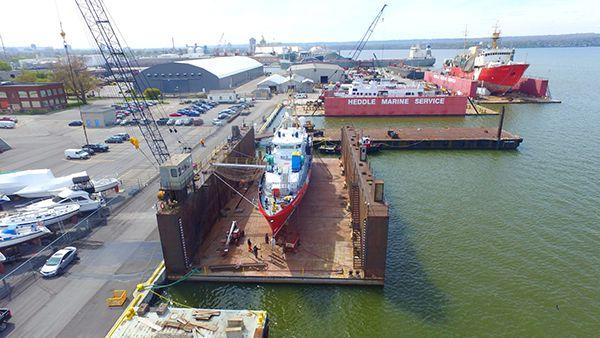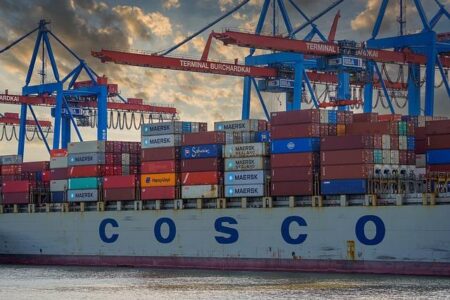Following its recent expansion into the United States market, Canada’s Davie Shipbuilding is setting its sights on a new opportunity in Northern Europe. The Quebec-based shipyard is targeting Sweden’s urgent need to replace and modernize its aging icebreaker fleet, aiming to fill a critical gap in Arctic and Baltic maritime capabilities. As climate change intensifies ice conditions and strategic interests in the region grow, Davie’s move signals a potential deepening of international naval collaboration and competition in the icebreaker sector.
Canada’s Davie Shipyard Targets Swedish Icebreaker Market After US Expansion
Davie Shipyard, Canada’s leading maritime contractor, is positioning itself to bridge a critical gap in Sweden’s icebreaker fleet following its recent operational expansion in the United States. The shipyard’s strategic move leverages its enhanced capacities and experience gained from diverse Arctic projects, aiming to compete for upcoming Swedish government contracts focused on modernizing polar vessel capabilities. Industry experts note that Davie’s innovative engineering and modular construction approach could be a game-changer in addressing the demanding specifications of Nordic icebreakers, which must operate efficiently in some of the harshest maritime environments on Earth.
In targeting the Swedish market, Davie highlights several competitive advantages, including:
- Advanced Icebreaking Technology: Incorporating state-of-the-art hull designs and propulsion systems to improve ice navigation.
- Cost-Effectiveness: Leveraging economies of scale from its US-based projects to offer competitive pricing without sacrificing quality.
- Environmental Compliance: Meeting stringent EU emission standards with hybrid and LNG-powered vessel options.
| Feature | Davie Capabilities | Swedish Requirements |
|---|---|---|
| Ice Class | Polar Class 4 | Polar Class 4 or higher |
| Propulsion | Hybrid Diesel-Electric | Low-Emission Solutions |
| Construction Timeline | 18-24 months | 24 months maximum |
Assessing Technological Capabilities and Strategic Advantages of Davie’s Icebreaker Designs
Davie’s icebreaker designs leverage decades of experience in Arctic shipbuilding, combining robust structural engineering with cutting-edge propulsion technologies. Their vessels are engineered to operate efficiently in extreme cold and thick ice conditions, featuring reinforced hulls with optimized icebreaking bows that reduce resistance and increase maneuverability. This technological edge is complemented by advanced powertrains, often integrating dual-fuel engines capable of switching between LNG and diesel, ensuring both environmental compliance and operational flexibility in diverse maritime theaters.
Key strategic advantages within Davie’s portfolio include:
- Modular design architecture allowing rapid customization to meet specific client needs across military and commercial sectors.
- Integrated automation systems enhancing crew safety and reducing onboard personnel requirements during demanding ice operations.
- Proven Arctic operational record supported by successful deployments in Canada’s northern waters and recent expansion into US markets.
| Capability | Davie Icebreakers | Industry Benchmark |
|---|---|---|
| Ice Class | Polar Class 4 | Polar Class 5 |
| Propulsion Type | Dual-Fuel Diesel/LNG | Diesel Only |
| Automation Level | High | Medium |
| Hull Reinforcement | Enhanced Steel Alloy | Standard Steel |
Recommendations for Navigating Regulatory Challenges and Strengthening Nordic Partnerships
Successfully entering the Nordic icebreaker market requires Canadian industry players like Davie to thoroughly understand the region’s complex regulatory landscape. This involves engaging proactively with both national authorities and EU bodies to ensure compliance with environmental standards, safety regulations, and procurement rules. Establishing transparent communication channels early on can preempt potential legal obstacles and foster trust among Nordic partners. Additionally, leveraging local legal expertise and participating in relevant maritime forums will aid in navigating the multilayered regulations while aligning the vessel design and construction process with Nordic expectations.
Strengthening alliances with Nordic shipyards, technology providers, and research institutions is equally critical. Collaborative ventures help bridge knowledge gaps, enhance innovation, and increase competitive advantage. Key strategies include:
- Joint development projects focused on icebreaker technologies and sustainable maritime solutions.
- Cross-border workforce training programs to share specialized skills and best practices.
- Coordinated lobbying efforts to influence regional policy frameworks supporting shipbuilding and Arctic operations.
| Challenge | Recommended Approach | Expected Outcome |
|---|---|---|
| Stringent environmental compliance | Early engagement with regulators & eco-certification | Smoother approvals & enhanced reputation |
| Complex procurement processes | Local partnerships & transparent bids | Higher contract success rate |
| Technological gaps | Joint R&D programs with Nordic firms | Improved innovation and competitiveness |
Future Outlook
As Davie Shipyard charts its next strategic moves following recent expansion in the United States, its focus on Sweden’s icebreaker requirements signals a new chapter in its international ambitions. By targeting niche markets where expertise in Arctic and ice-hardened vessels is paramount, Davie aims to solidify its reputation as a key player in polar shipbuilding. The coming months will reveal how the Canadian shipyard leverages its capabilities to fill gaps in Sweden’s fleet, potentially reshaping the competitive landscape of icebreaker construction and Arctic maritime defense.




